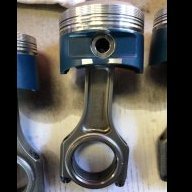Pros & Cons Of Not Running A Bov
Announcements
-
Similar Content
-
Latest Posts
-
I put another 2 layers of putty and still getting pinholes. Think i might either try the filler first then putty or just leave the little specs of guidecoat as is and get primer to fill it in. I think i misread understood what you said above when you said my glazing putty wasnt enough for the size of the area. I thought you meant 1 coat and i needed to. But i think what you meant was that I needed filler first? I also went a bit too far out the repair area as my spreader is a bit large.
-
You do sorta. In my instance they were little specs and I didn't even think they'd be pin holes but it all makes sense now. Huge learnings there!
-
Ah ok that makes sense and it's where i think i went wrong because before when i put filler then putty, i didn't have this issue and now i do because i only put 1 coat of putty. Thanks for that heaps man, it's a good way to put it! With my putty I'm using the dolphin glaze which i just saw it says finishing putty lol. I didnt put filler cause it was a shallow area but i see what you're saying. Also I'm an idiot, i just realised that while i put new putty there are pinholes! I probably saw it before and ignored it for whatever reason. I think because i thought putty is used to fill pin holes that itself wont make pinholes but that's incorrect of course. I feel silly now haha. ok I think I know what to do next. Thanks man!
-
By Murray_Calavera · Posted
Yes correct, the guide coat is showing low spots, in this instance the low spots are pin holes. I agree wetting the areas makes it more visible (but you can see it's there before you wet it as well lol). Once the panel is flat, the guide coat will be gone -
By Murray_Calavera · Posted
I wouldn't do it outside, the contamination landing in the paint, the wind and a million other things will drive you crazy. That's a way too big of an area to use your single stage putty on. Pretend it's all filler and those pin holes appeared, you'd then use the putty on those pin holes. They are still pin holes, hmm I expect a few coats of high fill primer could deal with those.
-




Recommended Posts
Create an account or sign in to comment
You need to be a member in order to leave a comment
Create an account
Sign up for a new account in our community. It's easy!
Register a new accountSign in
Already have an account? Sign in here.
Sign In Now